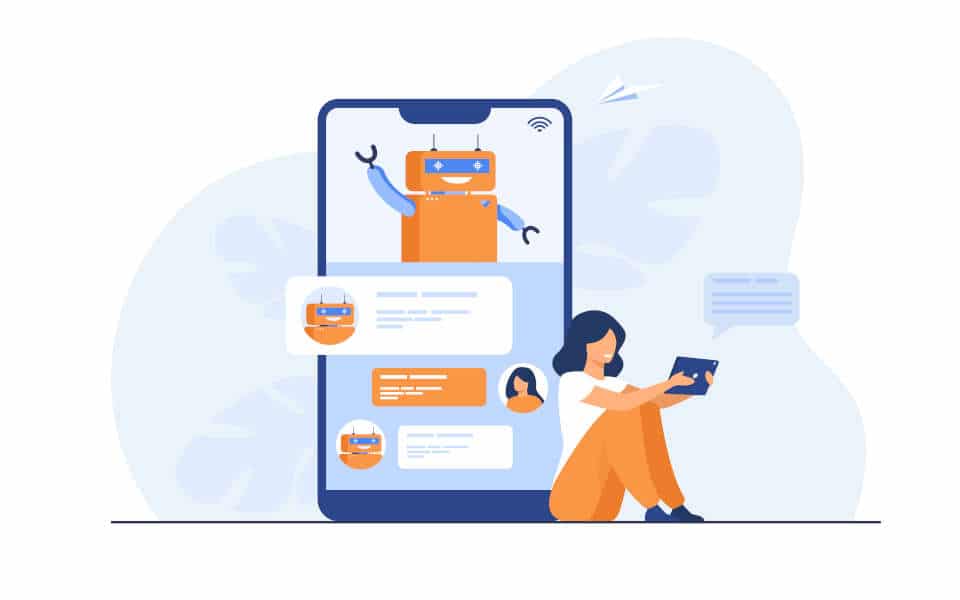First appearing in the 1960s, NLU (or natural language understanding) has evolved significantly. Today, machines are capable of grasping the deep, nuanced meaning of human language. Sometimes even better than human beings themselves. Find out more about NLU technology, its practical applications and how it works.
The NLU or understanding natural language
Definition of NLU
NLU (or natural language understanding) is a branch of automatic natural language processing (NLP) and artificial intelligence. The aim is to grasp the deeper meaning of a text or oral discourse. But it involves much more than simple syntactic analysis. Using advanced machine learning models, the NLU is able to decipher the emotional connotations, underlying intentions and objectives expressed in written or spoken text. In addition, natural language understanding is programmed to understand meaning, despite common human errors (such as mispronunciations, misspellings or transpositions of letters and words).
Today, machines can interpret natural language in a contextual way and respond appropriately to different requests. This represents a significant advance in our understanding of human language.
Good to know: While the arrival of ChatGPT has highlighted the advances in NLU, it has already been around for many years through chatbots and intelligent assistants such as Alexa, Google Assistant and Siri.

NLU, NLP and NLG: what's the difference?
Since human language is particularly complex, a number of techniques are aimed at refining its understanding and processing. NLU (natural language understanding) is one of them. But it is far from being the only one.
- Natural language processing (NLP) brings together a range of systems (including the NLU) designed to analyse and understand human language. To do this, machines process unstructured linguistic data.
- Natural language generation (NLG): like NLU, natural language generation is a subset of NLP. The aim here is to automatically generate texts in natural language.
- Computers imitate the way humans communicate with each other, with greater fluidity, emotion and personality. For example, using a set of data, computers can automatically generate a news article, a prospecting email or a sales page.
NLU, NLP and NLG are used together to understand and produce human-like texts.
Application examples
Today, technologies using the NLU are multiplying all the time. Here are a few examples:
- Interactive Voice Response (IVR): these technologies are used to route calls. When a call is made, the IVR system analyses the caller’s voice, the individual words used and the grammatical structure to determine the caller’s intention. It then provides the most appropriate response.
- Intelligent personal assistants: these are simply chatbots. These computer programmes are capable of conversing with a human being on a wide variety of subjects. They are often used in companies for customer service, in particular to provide answers to frequently asked questions.
- Detecting user feelings and intentions: NLU (natural language understanding) can help organisations analyse comments received on social networks. By doing so, companies are better able to know whether or not their customers are satisfied with the products or services on offer.

How the NLU (natural language understanding) works
To understand and grasp the meaning of a text or speech, natural language understanding (NLU) systems use two fundamental techniques:
- Entity (or token) recognition: here, the NLU system defines several entities within the message. These include named entities, which correspond to categories such as names of people, places, objects, punctuation marks, etc., and numerical entities, such as quantities, dates, currencies, percentages, etc.
- From these, the computer extracts the most important information for understanding the meaning of the text or speech.
- Intention recognition: this involves identifying the user’s feelings and objective. To do this, the computer looks at the grammatical structure of sentences and the various possible ambiguities in the meaning of words. This is undoubtedly the most important part of understanding human language.
Ultimately, these algorithms enable human discourse to be made more structured. It is transformed into a data model made up of semantic and pragmatic definitions that can be translated by a machine in real time.
NLU and Data Science
Human language is particularly complex and subtle. To enable a computer to understand all its nuances is truly a feat.
Yet the latest advances in artificial intelligence show that machines are more than ever capable of understanding and expressing themselves like humans. For data professionals, NLU (natural language understanding) opens up promising prospects. But they still need to be trained in machine learning and its latest technologies.











